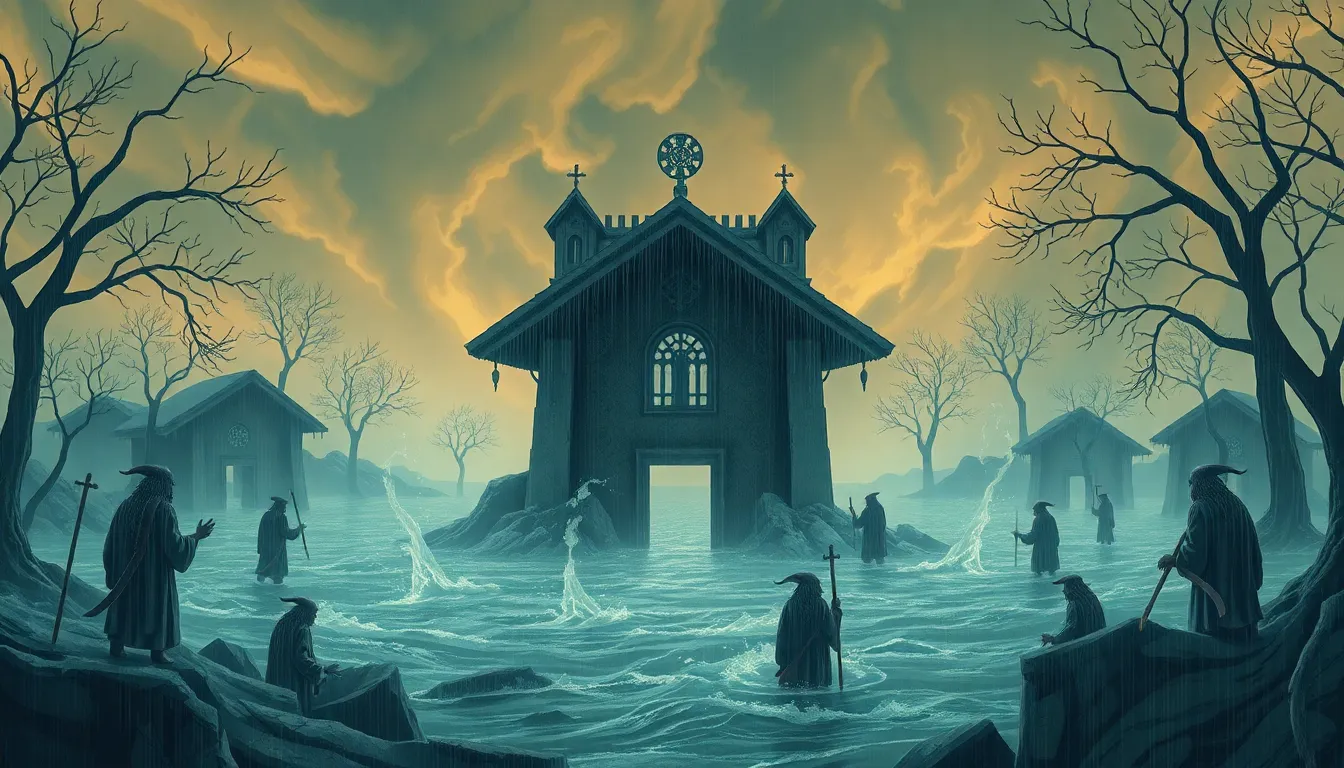The Role of Community in Flood Myths: Tales of Unity and Survival
Introduction: Understanding Flood Myths
Flood myths are ancient stories that recount the deluge of water that devastates the earth, often as a divine response to humanity’s actions. These narratives can be found across various cultures and serve as a lens through which we can understand human experiences and values. By examining these myths, we can uncover the collective fears, hopes, and moral lessons that have shaped communities throughout history.
Historical Context of Flood Myths
Many ancient civilizations have notable flood myths, each offering unique perspectives on the role of community in overcoming disaster. Some prominent examples include:
- Mesopotamian Mythology: The Epic of Gilgamesh features Utnapishtim, who survives a great flood sent by the gods to wipe out humanity, paralleling the story of Noah.
- The Bible: The story of Noah’s Ark illustrates themes of obedience, faith, and divine mercy.
- Indigenous Cultures: Many Native American tribes have their own flood stories, often reflecting their deep connection to nature and the land.
Despite their differences, these narratives share common threads that speak to human resilience and the importance of community in the face of calamity.
Common Themes in Flood Myths
Flood myths often contain recurring motifs that reveal deeper meanings:
- The Symbolism of Water: Water represents both destruction and renewal; it can cleanse the earth but also wreak havoc on communities.
- Destruction and Rebirth: The devastation caused by floods leads to a new beginning, emphasizing the cycle of life.
- Moral Lessons: Many myths impart lessons on morality, responsibility, and the consequences of human actions.
These themes resonate across cultures, highlighting the universal human experience of facing natural disasters.
Community Resilience in the Face of Disasters
Flood myths often reflect communal responses to disasters, showcasing how societies come together in times of crisis. These narratives illustrate cooperation, solidarity, and the shared experience of survival.
For example, in the story of Noah, the construction of the Ark involves not just Noah, but also the animals, symbolizing a collective effort to preserve life. Similarly, Utnapishtim’s tale emphasizes the importance of community in rebuilding after destruction.
The Role of Heroes and Leaders in Flood Myths
Key figures in flood myths often embody the ideals of leadership and heroism. Characters like Noah and Utnapishtim serve as beacons of hope and guidance for their communities.
These leaders often represent:
- Vision: They foresee the impending disaster and take action to save their communities.
- Bravery: Their courage inspires others to follow and unite in the face of adversity.
- Collective Action: They mobilize their communities, emphasizing the power of unity in overcoming challenges.
Cultural Identity and Shared Narratives
Flood myths play a significant role in shaping cultural identity and fostering a sense of belonging. These stories are often passed down through generations, preserving cultural memory and values.
Through storytelling, communities reinforce their shared experiences, creating a bond that transcends individual struggles. The oral tradition of recounting flood myths strengthens communal ties and ensures that lessons learned from past disasters are not forgotten.
Modern Interpretations of Flood Myths
In contemporary society, the relevance of ancient flood myths can be seen in discussions surrounding climate change and natural disasters. As communities face increasing threats from flooding, these narratives offer inspiration and guidance.
Many modern communities draw on flood myths to:
- Understand their relationship with nature
- Foster resilience and preparedness
- Encourage communal action and support
Case Studies of Community Responses to Flooding
Real-world events often echo the themes found in flood myths. For instance:
- Hurricane Katrina: The disaster highlighted both the vulnerabilities and strengths of communities, with many coming together to support each other during the crisis.
- The 2010 Pakistan Floods: This event saw extensive community mobilization, as neighbors and local organizations worked together to provide aid and rebuild.
These case studies demonstrate the enduring power of community in the face of adversity, much like the heroes of ancient narratives.
The Psychological Impact of Flood Myths on Communities
Flood myths also serve a psychological purpose, providing comfort and hope to communities affected by disasters. The shared stories can help individuals process their experiences and find meaning in their suffering.
The therapeutic role of these narratives is evident in:
- Building resilience by fostering a sense of hope
- Encouraging collective healing through shared experiences
- Reinforcing community bonds that aid recovery
Conclusion: The Enduring Legacy of Flood Myths
In summary, flood myths are more than just stories of disaster; they are rich narratives that emphasize the importance of community in times of crisis. They remind us of the resilience and strength that can be found when individuals come together, reinforcing the need to foster these bonds in the face of modern flooding challenges.
As we navigate an increasingly uncertain world, recognizing and nurturing community resilience will be essential to our survival and recovery. Let us draw inspiration from these timeless tales of unity and survival.




